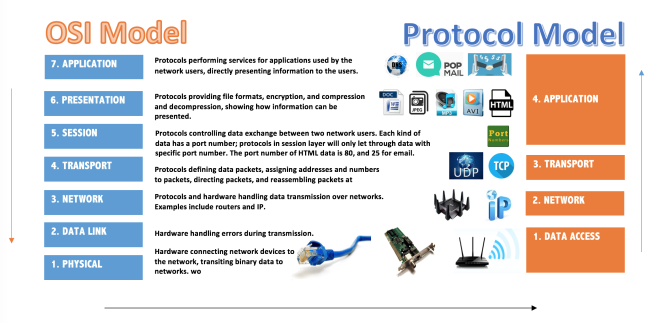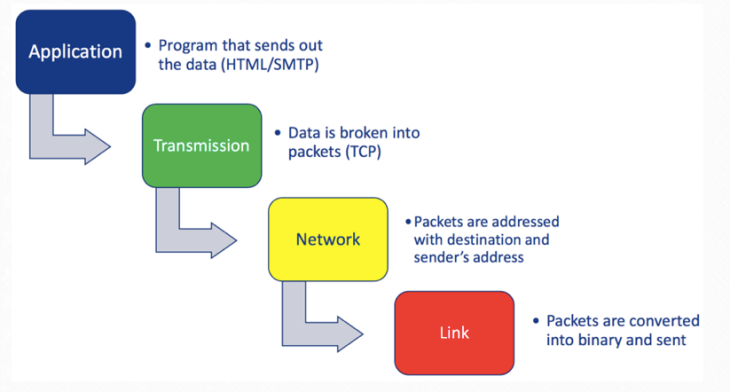Standard
The standard is the common language that all computing hardwares and softwares can understand and use to communicate. We called the common language: the common ground in CS. Institute of Electrical and Electronics Engineers (IEEE) and Internet Engineering Task Force (IETF) are two organization which set up the standardizing network protocols.
Open Systems Interconnection (OSI)
OSI is established by International Standards Organization (ISO) in order facilitate the communication between a variety of systems.
There are many advantages of OSI. It is easier to manage. If we find out some problem in a particular layer, we can merely dealing with that layer. Each layer has a common language, so manufactures can only focus on the technology of one particular layer.
The communication process under OSI
("OSI Model And 7 Layers Of OSI Model Explained")
When the user sends a file or click on a link, he/she ignites a flow of information from the application layer to physical layer of the senders’ computer and goes to the physical layer to the application of the receiver’s computer.
Application Layer
- This layer receives the command by the users and allow the users to access to network resources. (Fore example, HTTP.)
Presentation Layer
- This layer acts like the “translator for the network”. It translates the format of data used in application layer to a common format used in other layers. (For example, encryptions like JPEG)
Session Layer
- This layer sets up, coordinates, and terminates conversations. Only when the data has a specific port number, protocols in session layer will set up the conversation and allow that data to go through. (Port number: 25 for mail, 80 for html)
Transport layer
- This layer is responsible for error recovery, and further control the data flow. It only allows reliable and valid data to be transferred.
Network layer
- This layer breaks data down into packages, add IP address to each segments. Routers are involved to determine the path of each package. (For example, network protocols like TCP/ IP)
Data link Layer
- This layer turns packages into frames and deals with errors.
Physical layer
- This layer transforms the frames into bits, send over the network via physical hardware, media (Ethernet: data are logically arranged and encoded in physical media before they are sent to another computer, then received by another computer in its physical layer.) (Lim)

TCP / IP (protocol model)
TCP/IP protocol model is a abstract of OSI.

("OSI Model And 7 Layers Of OSI Model Explained")
Poster of Network Layers

Works Cited
“OSI Model And 7 Layers Of OSI Model Explained”. fossBytes. N.p., 2016. Web. 22 Oct. 2016.
Lim, J Kenneth. The OSI Model Animation. 2013. Print.
